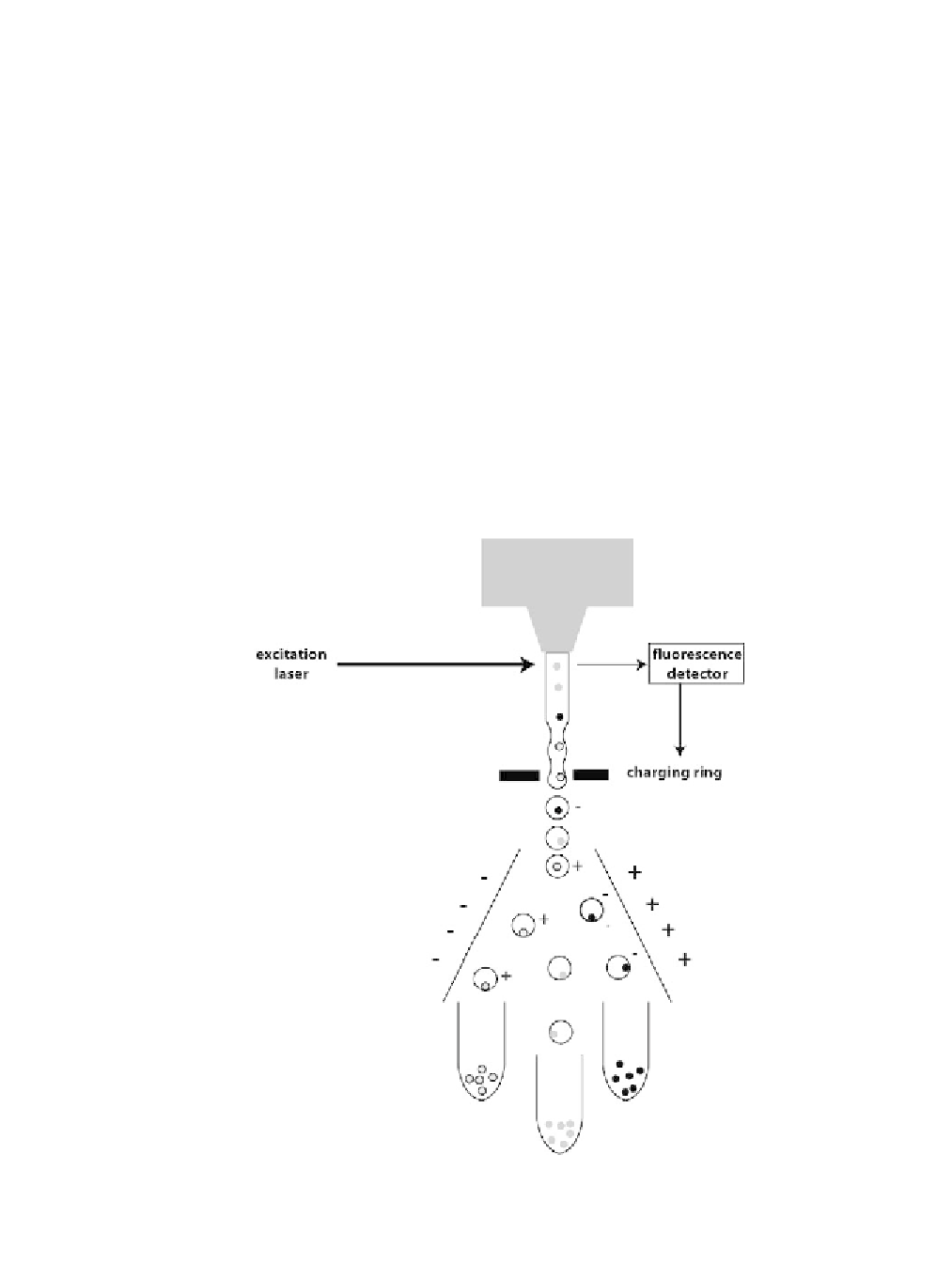Biomedical Engineering Reference
In-Depth Information
8.3.3.2 Flow Cytometry-Based Techniques [37]
Flow cytometry consists of flowing cells (although this principle can be used with
any microparticle) one by one in front of a detector in order to measure their physi-
cal or chemical properties. According to this measurement, the population can be
analyzed or even sorted in real time by addressing them toward the right container.
The most popular of these systems is fluorescence activated cell sorting (FACS),
where the signal measured by the detector is fluorescence. The cells are sorted ac-
cording to their measured laser-excited fluorescence. The cells also scatter some of
this light (see Section 8.3.2.1, “Light scattering”), giving additional information
on their dimensions. After these measurements, the buffer stream transporting the
particles breaks into droplets in a very controlled way upon the application of a vi-
bration of the nozzle. Each of these droplets contains one cell, and according to the
fluorescence measurement performed earlier, the drop is electrically charged with a
positive or negative charge.
A static electric field is then applied transversally to this stream of drops and
deflects them in one direction or the other depending on their electric charge. Some-
times, several colors can be excited by a single excitation wavelength so different
aspects of the cell content can be probed simultaneously (Figure 8.20).
Figure 8.20
FACS can sort cells according to their fluorescence properties.

